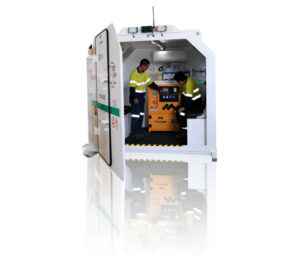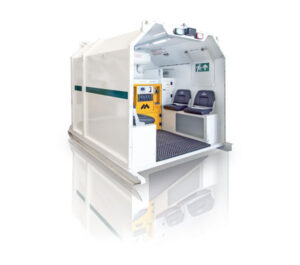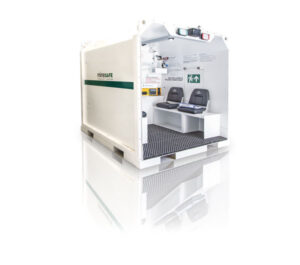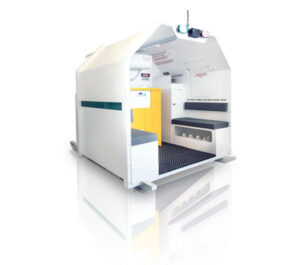Training Chambers for Operational & Maintenance Education
Training Chambers by MineARC are designed to assist sites in the education and development of staff. They have been engineered to allow for convenient service, maintenance and operational training in an above-ground location.
Hinged Chamber with Series IV
Offers the same advanced features as the Standard Design with Series IV, with the added benefit of a fully sealing, oversized door.
- Series IV control system
- MARCISORB chemical cartridges
- Face of unit can hinge outwards
Standard Design with Series IV
Engineered based on the MineARC’s Standard Design refuge model and features the flagship Series IV controller and scrubbing system.
- Series IV control system
- MARCISORB chemical cartridges
- Compressed Air Management System
Compact Design with ELVP
Engineered based on MineARC’s Compact Design Refuge Chamber and features an ELVP (extra-low-voltage-portable) control system.
- ELVP control system
- MARCISORB chemical cartridges
- Compressed Air Management System
Standard Design with Series III
Engineered based on MineARC’s Series III refuge chamber model, which was on the market between the years of 2009 and 2013.
- Series III control system
- Free pour chemicals
- Three-stage filter kit
Training Chambers - Why Are They So Important?
A hands-on approach with a MineARC Training Chamber allows participants the chance to experience operating their refuge chambers, demonstrated within the context of the underground environment.
Educating personnel about the potential psychological and physical impacts of being in a refuge chamber will create greater awareness and prepare them for when an emergency occurs.
Improved safety procedures have resulted in major incidents becoming rarer in underground mines and construction; however, this now means there is often little on-site experience in dealing with these types of situations.
The growth of a good safety culture depends on the reliability of available information, and for it to be used alongside regular training as a tool for better decision making and the sound management of resources. Training, including rigorous simulations, provides practical experience and improves the rate of correct response and the understanding of what it is like to be in a refuge chamber.







